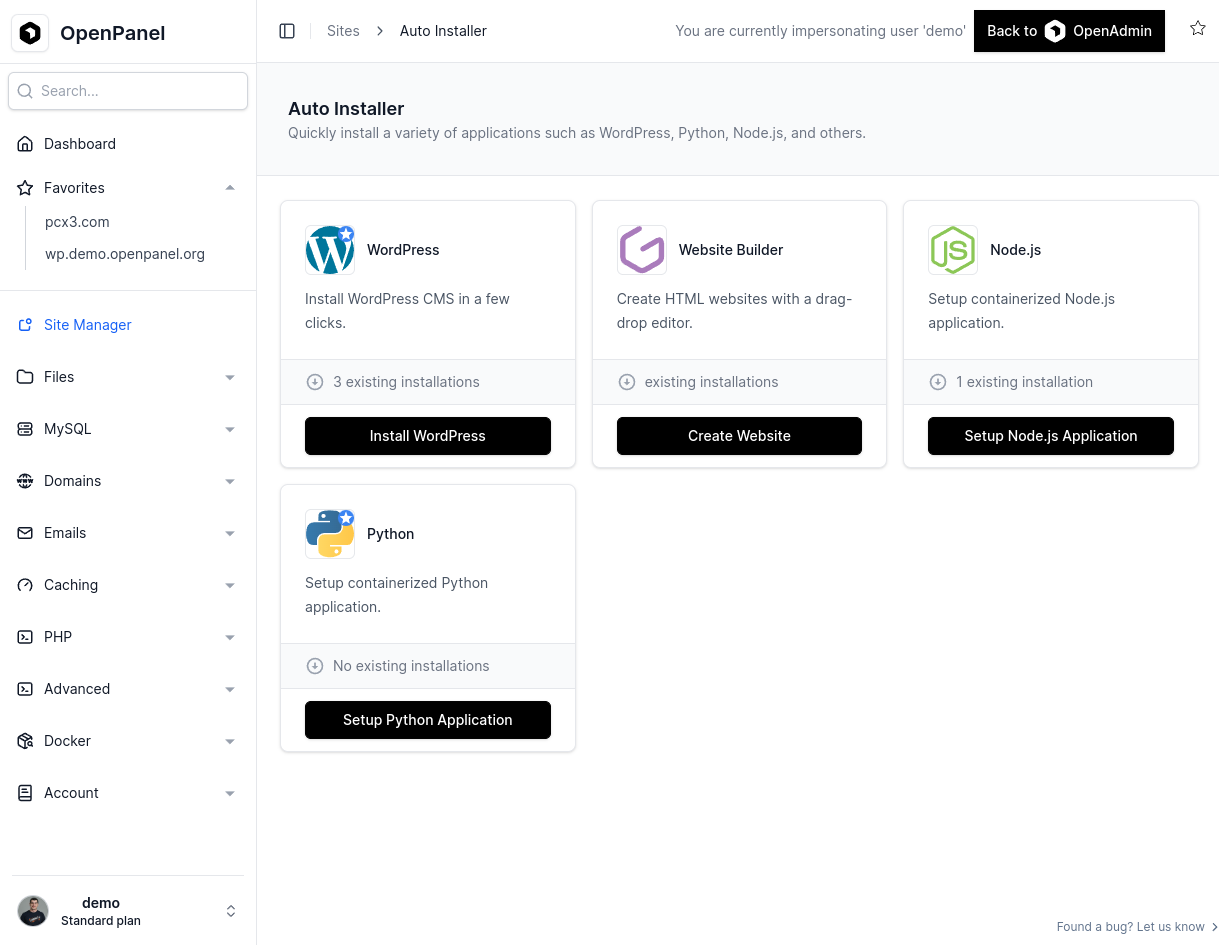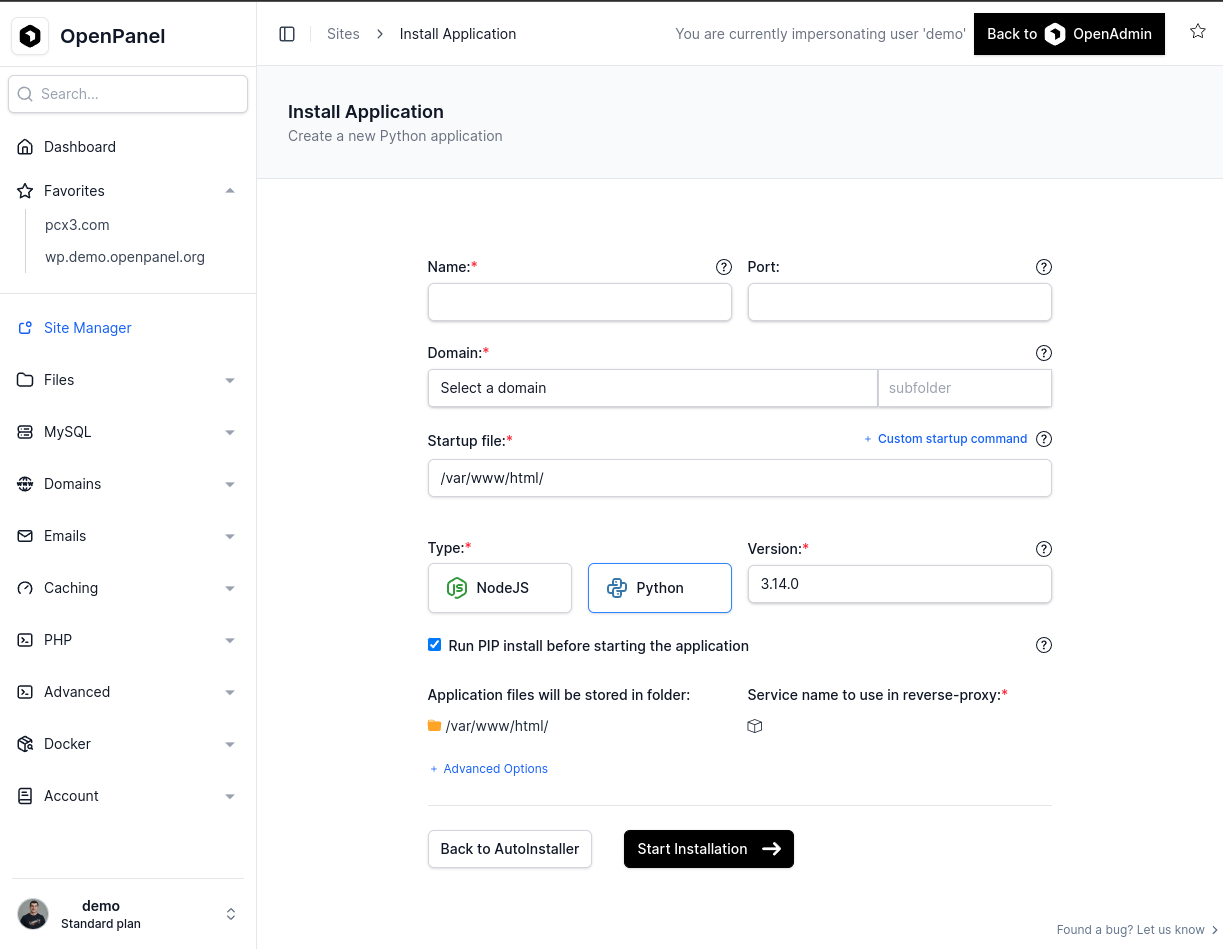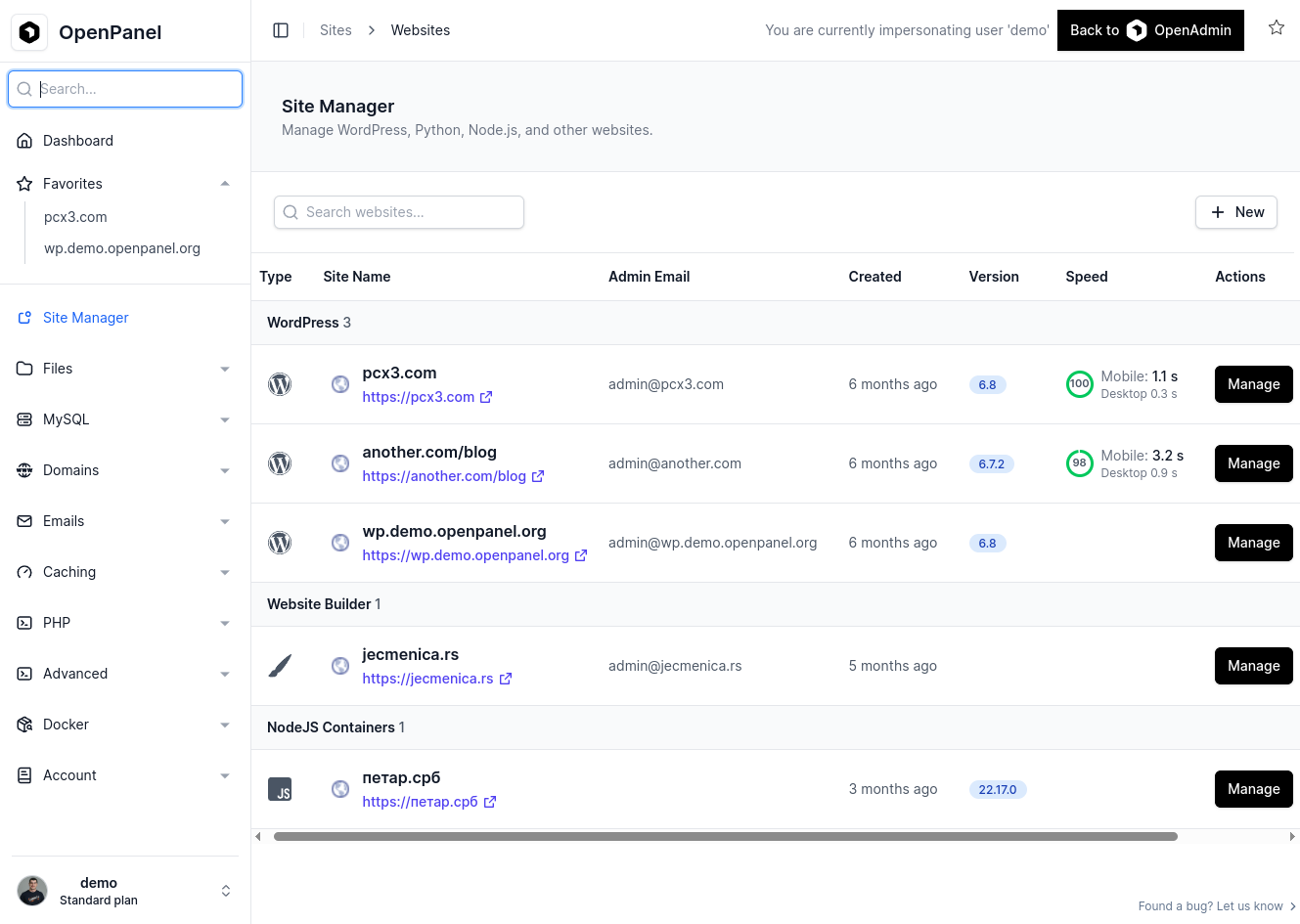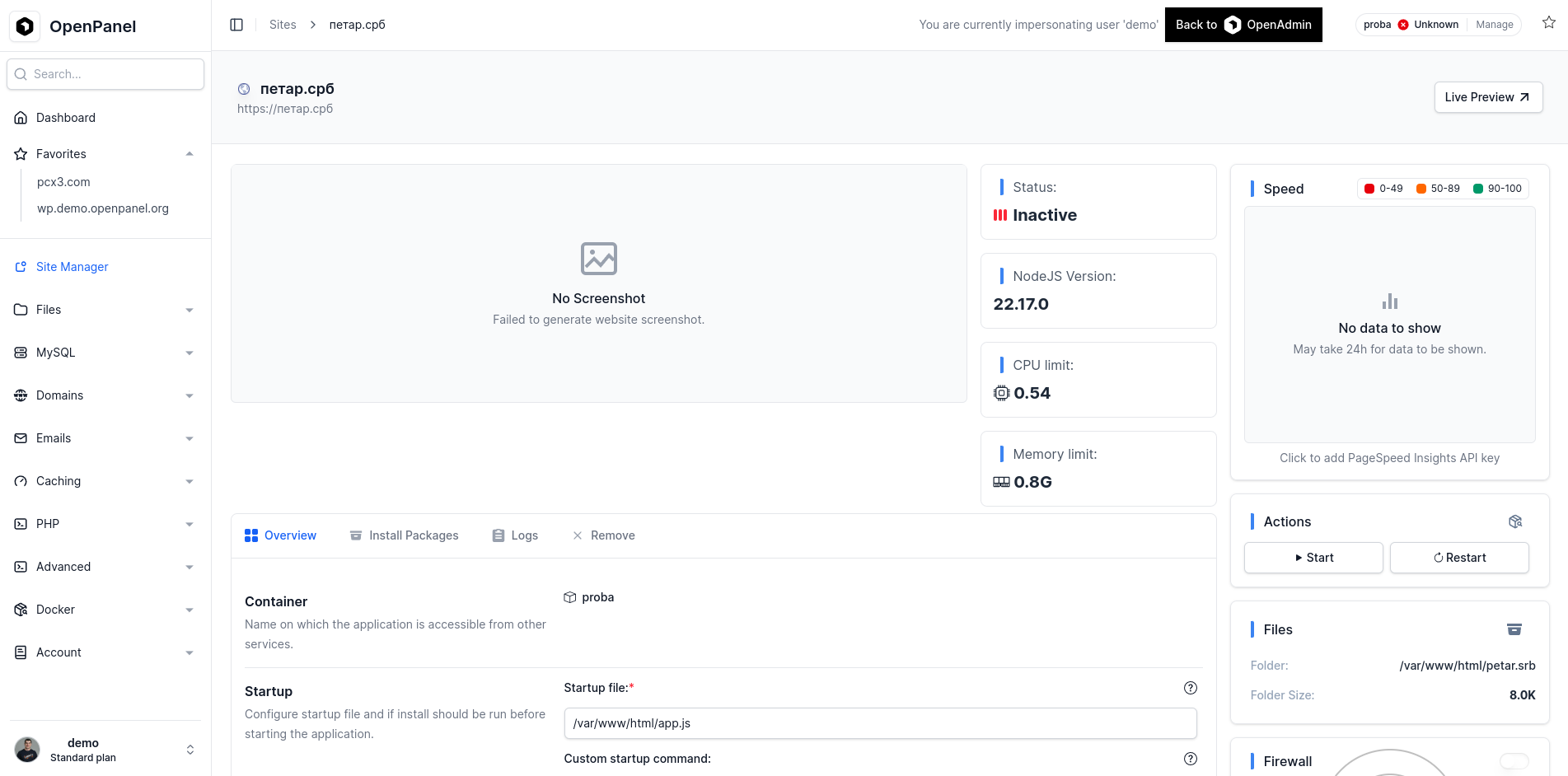Version: 1.7.2
Node.js and Python
Containerized Node.js and Python applications can be created and managed in OpenPanel Enterprise Edition.
Create an Application
To create a new Python or Node.js application, navigate to OpenPanel > AutoInstaller and select Python or NodeJS.

On the next page, you can configure the following settings:
- Name – The name of the application and container as displayed in OpenPanel.
- Port – Set a custom port (e.g., 3000 or 5000) if your app uses one. Otherwise, port 80 is used by default.
- Domain Name / Subfolder – The domain (and optional subfolder) where the application will be publicly accessible.
- Startup File – The file executed at startup with the
nodeorpycommand. - Custom Startup Command – Use a custom startup command instead of the default
nodeorpy. - Type – Choose between Node.js or Python.
- Version – Select any available version from Docker Hub.
- Run Install – Run
npm installorpip installbefore starting the application. - CPU Cores – Number of CPU cores allocated to the application.
- Memory – Amount of memory (in GB) allocated to the application.

After completing the form, click Start Installation. The installation process will be displayed below the form. Once complete, you’ll be redirected to the management page where you can view all your applications.
Manage Applications
Once your application is created, you can manage it from OpenPanel > Site Manager.

Click Manage next to the application name to open its management page.

On this page, you can view important details such as:
- Screenshot – Preview of the application’s domain.
- Status – Current container status.
- Version – Node.js or Python version in use.
- CPU Limit – Configured CPU allocation.
- Memory Limit – Configured memory allocation.
- Speed – Google PageSpeed Insights data for the website.
- Files – Current folder path and size.
- Firewall – WAF (Web Application Firewall) status for the domain (if enabled).
You also have several management options:
- Actions – Start, stop, or restart the container.
- Overview – Modify startup file or command, working directory, package installation settings (NPM/PIP), version, and resource limits (CPU, Memory, PIDs).
- Install Packages – View and manage
package.jsonorrequirements.txt, and run NPM/PNPM or PIP installations. - Logs – View container logs for troubleshooting.
- Remove – Delete the application.
Was this helpful?